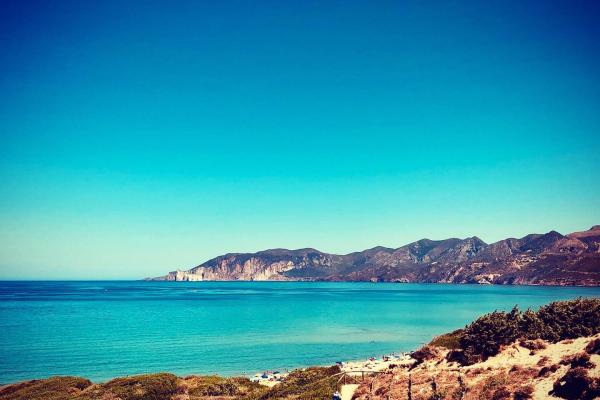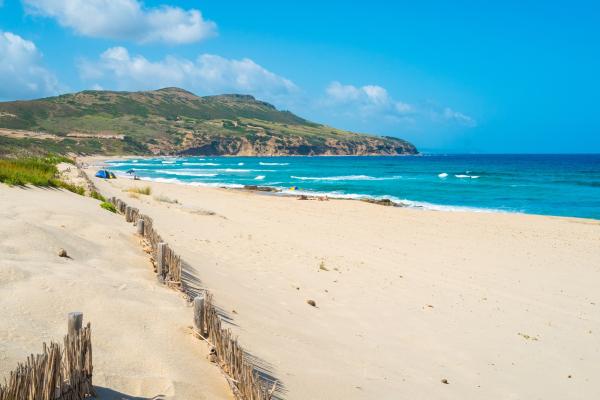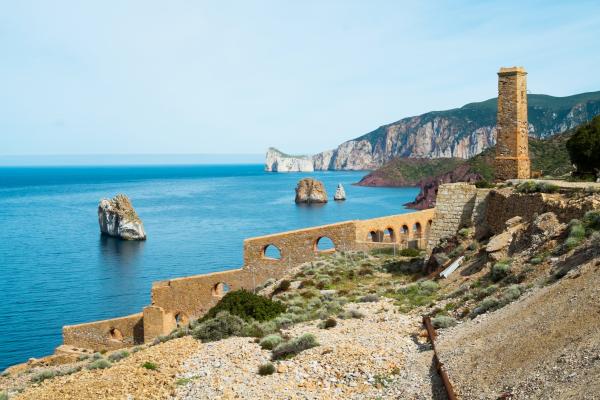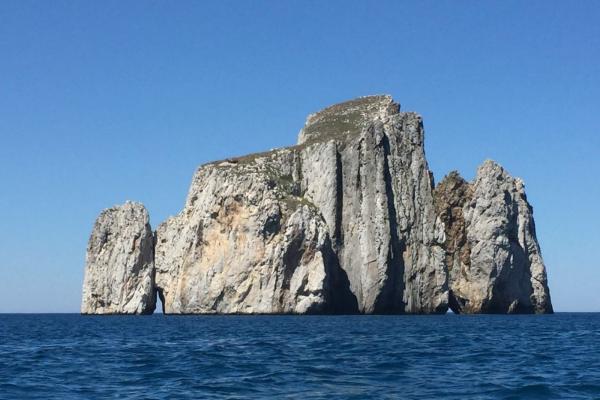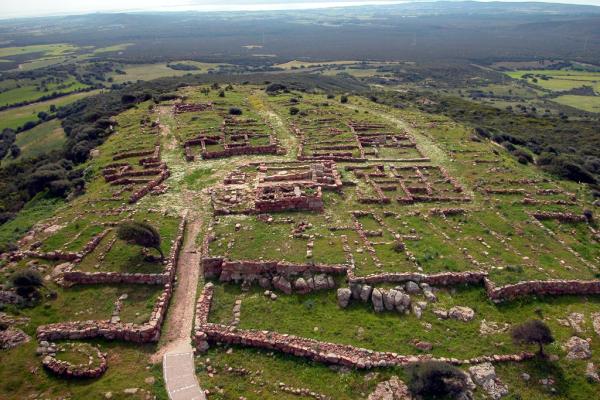This vast monument perfectly documents the architectural capacity and social and spiritual life of the Nuragic civilisation. The Seruci complex extends across six hectares in the territory of Gonnesa, and consists of complex Nuraghe, a bulwark, an extensive village of huts and a Tomb of Giants. It is reached via the welcoming subdivision of Iglesiente, which is about six kilometres, along the Provincial Road 82 towards Portoscuso. It was certainly a complex Nuraghe, penta- or hexalobate, whose construction presumably began at the end of the 14th century B.C., in the recent Bronze Age, and whose life lasted until the 10th century B.C., in the final Bronze Age. The central tower (keep) with a projecting dome was originally composed of three superimposed cells. The keep, with a diameter at the base of about 60 metres (!), rises up around 15 metres to stand out on a relief, and is still surrounded by a bulwark of five (or six) towers, some of which are still in good condition.

See this place because...
Take a fascinating ‘dive’ back 3,500 years to discover majestic monuments, the life and the customs of the Nuragic civilisation in its advanced stages
Nearby
Percorrere la SS 126 Carbonia-Iglesias e, all'altezza di Bacu Abis, svoltare a sinistra per Portoscuso e procedere per qualche chilometro ancora. Il contesto ambientale Il complesso si trova in sito campestre. Descrizione Il complesso di Seruci, che si estende per oltre sei ettari, è costituito da un nuraghe complesso, un antemurale, un esteso villaggio di capanne e almeno una tomba di giganti, ubicata sulla collina prospiciente. Il nuraghe, in fase di scavo, ridotto ad un cumulo di macerie che si eleva per circa 14 m di altezza sul piano di campagna, era sicuramente un nuraghe complesso (forse pentalobato) con mastio centrale a tre celle sovrapposte, circondato da antemurale turrito. Il villaggio si compone di oltre un centinaio di capanne adagiate lungo un pendio sulla cui cima svetta la mole del nuraghe. Il Taramelli, che operò una prima campagna di scavo, mise in luce quattro capanne circolari. Fra queste, mostravano particolare interesse la capanna con bancone sedile alla base della pareti e nicchie sopraelevate entro le murature, e un'altra, cui era annesso un cortile rettangolare. Gli interventi più recenti, concentrati nel margine SO dell'insediamento - su una superficie di mq 550 - hanno portato all'acquisizione planimetrica di oltre 50 vani di diversa tipologia che si distribuiscono in sei isolati. Gli isolati, di uguale estensione e medesimo impianto ad "anello", distinti ma al contempo interrelati, si dispongono per lo più a gruppi di tre. Gli scavi hanno interessato finora un solo isolato, costituto da 14 ambienti disposti a sviluppo centripeto attorno ad un cortile centrale: una tipica struttura abitativa dell'ultima fase della civiltà nuragica, evoluzione dei semplici aggregati di capanne monocellulari.
You may also like
Nearby hotels and accommodations




